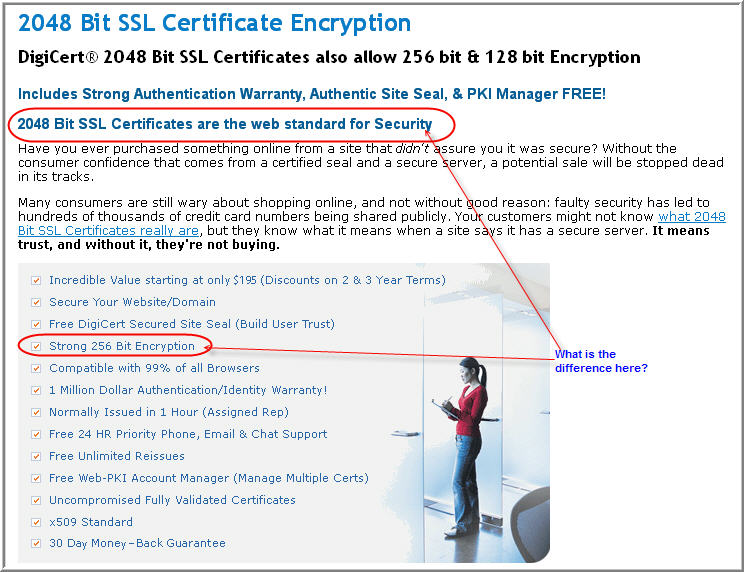In the realm of cybersecurity, the discussion surrounding encryption standards has become both vital and complex. One of the most frequently debated topics is the efficacy of 2048-bit SSL/TLS encryption. Emerging from the shadows of earlier, weaker standards, this particular encryption is heralded as the gold standard for securing data in transit. However, as is often the case in the world of cryptography, the perceived security of 2048-bit encryption invites scrutiny. Is it truly impenetrable, or does it merely delay the inevitable? This article endeavors to dissect the empirical and theoretical underpinnings of 2048-bit SSL/TLS, addressing its strengths and vulnerabilities to reveal an intricate web of cybersecurity.
At its core, SSL (Secure Sockets Layer) and its successor TLS (Transport Layer Security) are cryptographic protocols designed to secure communications over a computer network. This encryption is crucial in safeguarding sensitive information, such as credit card numbers and personal data, from prying eyes. The numerical designation ‘2048-bit’ refers to the length of the key used in asymmetric encryption algorithms like RSA (Rivest–Shamir–Adleman). In simplistic terms, the longer the bit length, the more secure the data is purported to be. A 2048-bit key provides an astronomically large keyspace, making brute-force attacks computationally impractical with current technology.
However, it would be untenable to assume that a longer key guarantees perpetual security. The crux of the matter lies in emerging computational capabilities and advancements in algorithmic efficiency. The exponential growth of processing power, particularly with the advent of quantum computing, poses a significant threat to even the strongest encryption standards. Although we are yet to fully harness quantum computers for widespread cryptographic attacks, theoretical constructs raise important questions. If quantum technology reaches a mature phase, algorithms that were once deemed unbreakable may face existential threats. For instance, a breakthrough in Shor’s Algorithm could reduce the complexity of breaking RSA encryption substantially, rendering 2048-bit keys inadequate.
Moreover, the longevity of an encryption standard plays an essential role when considering its future-proofing capabilities. The lifespan of a key is crucial; the longer the time period during which a key is actively employed, the more likely it is to be exposed to potential vulnerabilities. As adversaries become increasingly proficient, the risk of effective attacks heightens. Cryptographers universally agree on the adage: “better safe than sorry.” This ongoing evolution necessitates a proactive stance on the part of organizations, moving towards longer, more complex key lengths and exploring alternative algorithms to hedge against future threats.
Equally significant is the aspect of implementation. It is not enough to simply adopt a strong encryption scheme; the deployment of that scheme is where the true security lies. Misconfigurations or oversights can lead to vulnerabilities that expose encrypted data to risks, rendering even 2048-bit encryption ghastly ineffective. Furthermore, the human factor cannot be overstated. Employees may inadvertently compromise security through a lack of awareness or due diligence. Consequently, user education and cybersecurity best practices should be prioritized alongside technological measures. Without a comprehensive strategy, the adoption of strong encryption becomes essentially meaningless.
Another dimension associated with 2048-bit SSL/TLS encryption is its relation to privacy concerns. In an age where data harvesting and surveillance are rampant, the notion of secure communication transcends merely guarding against nefarious actors. The ethics of data collection and the potential for governmental interference also weigh heavily on public perception. As more individuals become privy to the ways in which their data can be intercepted and manipulated, the desire for robust, unassailable encryption grows. Users are drawn to the idea of 2048-bit encryption as a form of digital armor, a protective layer against a backdrop of escalating digital threats. Nevertheless, this desire prompts a paradox: in striving for privacy, do individuals inadvertently jeopardize the collective security of shared internet infrastructure?
Consequently, it is essential to consider that while 2048-bit encryption serves as an effective bulwark against potential breaches, it is not a panacea. Cybersecurity is a multifaceted discipline that requires continuous learning and adaptation. In light of this reality, organizations should regard encryption not as a singular solution but rather as one component of a comprehensive security framework. In the digital age, a holistic approach that combines robust encryption with proactive measures, infrastructure hardening, and user oversight will be necessary to build resilient systems.
Ultimately, the truth about 2048-bit SSL/TLS encryption is not a black-and-white discourse between indefatigable safety and inevitable breach. Instead, it is a nuanced examination of the delicate balance between current technological capabilities and speculative future advancements. Individuals and organizations alike must remain vigilant, adopting a proactive posture towards evolving threats while embracing the ongoing dialogue surrounding encryption. Thus, the conversation must pivot from viewing 2048-bit encryption as an unwavering shield to recognizing it as a significant, albeit impermanent, severance from the vulnerabilities that pervade the digital landscape.







Leave a Comment